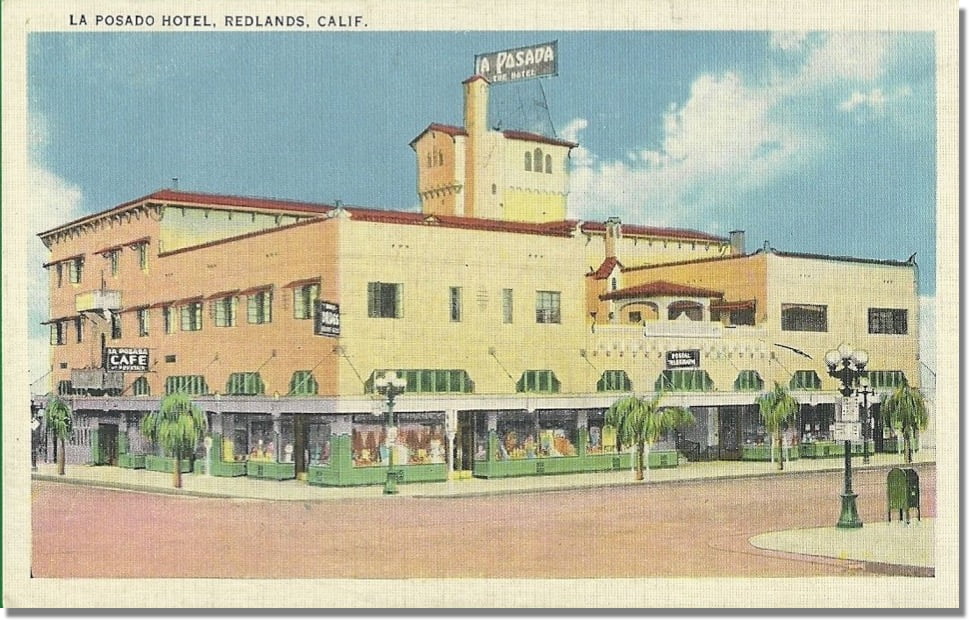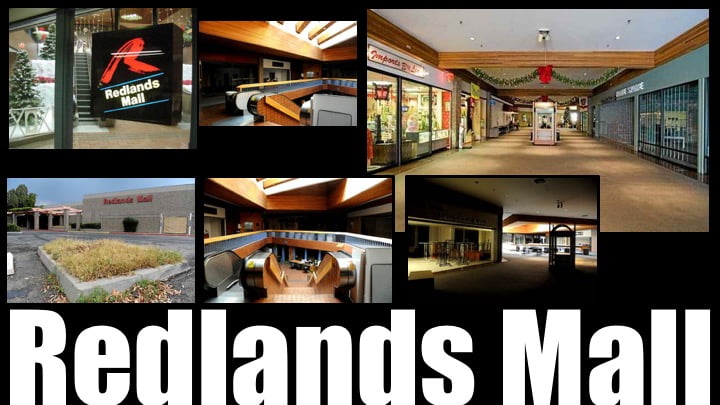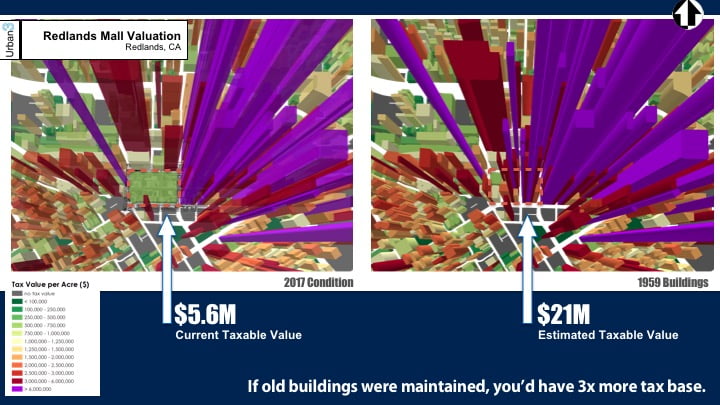Yesterday, I read a great article in the NY Times about a guy who is obsessed with dead and dying malls, and creates short films about these malls. Of course, the bizarre, sad wonder and whimsy of these films reminded me of the crazy images my colleague Josh McCarty shares periodically when he is out on site visits for Urban3.
When Josh was in Redlands, CA this spring for a project of ours, he came across a mall in its last death throes. Some history: in 1977 the city tore down several blocks of downtown, including the La Posado Hotel and other buildings.

Several streets were closed to build the shopping mall. Eventually the mall declined and has been closed for several years. In its current form the mall barely registers in our three dimensional model, pulling a modest $287,000/acre.

Super creepy images, right?? For some reason you can still walk through the mall, despite it being a corpse.
More importantly, we asked ourselves what might this property be worth had the mall never been built?
Using some historic records and comparably valued current property we estimate it might have been worth:
$21 million/per acre

That is a hell of a difference. Redlands would have 3 times more tax base if it had not gone and malled (mauled!) itself.
According to a study cited in the NY Times article I mentioned above, 20-25% of all enclosed malls in the US will close within 5 years. The average mall size is around 250,000-300,000 square feet, plus untold amounts of parking surrounding the buildings. These ‘cathedrals of consumption’ are quickly on their way towards languishing ruins.
What will these dead malls become? An example of this is Eastland Mall in Charlotte, on which the City is working towards a community-based redevelopment plan with our partners, Duany-Plater Zyberk. Hopefully, the hundreds of other enclosed malls on the chopping block in the next 5 years can be transformed to create community wealth and benefit, rather than becoming decayed Death Stars further eroding commercial areas and neighborhoods.
To end on a happier, more humorous note, check out this awesome TED talk by Dan Bell on this topic: